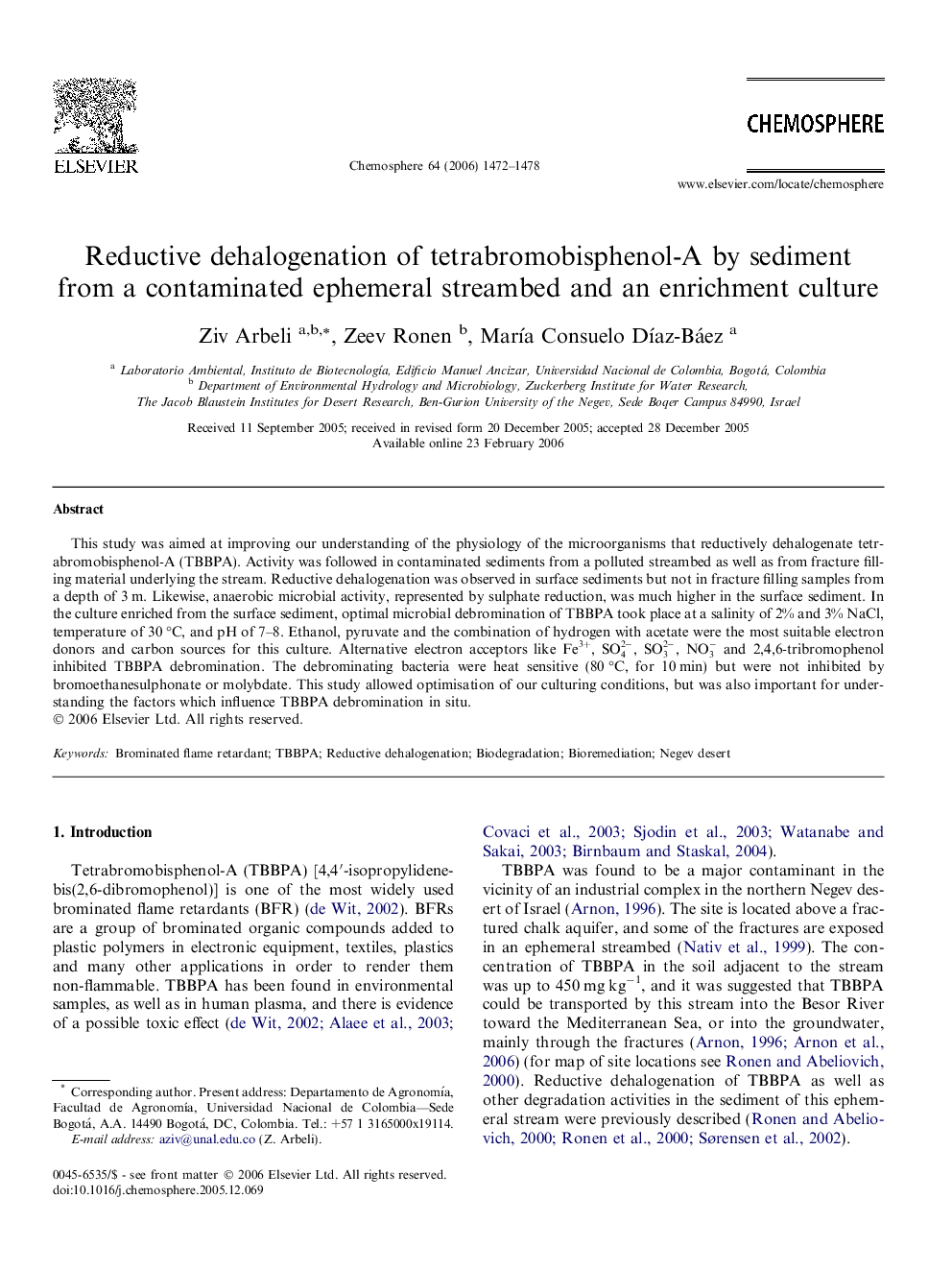| کد مقاله | کد نشریه | سال انتشار | مقاله انگلیسی | نسخه تمام متن |
|---|---|---|---|---|
| 4415497 | 1307749 | 2006 | 7 صفحه PDF | دانلود رایگان |
عنوان انگلیسی مقاله ISI
Reductive dehalogenation of tetrabromobisphenol-A by sediment from a contaminated ephemeral streambed and an enrichment culture
دانلود مقاله + سفارش ترجمه
دانلود مقاله ISI انگلیسی
رایگان برای ایرانیان
کلمات کلیدی
موضوعات مرتبط
علوم زیستی و بیوفناوری
علوم محیط زیست
شیمی زیست محیطی
پیش نمایش صفحه اول مقاله

چکیده انگلیسی
This study was aimed at improving our understanding of the physiology of the microorganisms that reductively dehalogenate tetrabromobisphenol-A (TBBPA). Activity was followed in contaminated sediments from a polluted streambed as well as from fracture filling material underlying the stream. Reductive dehalogenation was observed in surface sediments but not in fracture filling samples from a depth of 3 m. Likewise, anaerobic microbial activity, represented by sulphate reduction, was much higher in the surface sediment. In the culture enriched from the surface sediment, optimal microbial debromination of TBBPA took place at a salinity of 2% and 3% NaCl, temperature of 30 °C, and pH of 7-8. Ethanol, pyruvate and the combination of hydrogen with acetate were the most suitable electron donors and carbon sources for this culture. Alternative electron acceptors like Fe3+, SO42-, SO32-, NO3- and 2,4,6-tribromophenol inhibited TBBPA debromination. The debrominating bacteria were heat sensitive (80 °C, for 10 min) but were not inhibited by bromoethanesulphonate or molybdate. This study allowed optimisation of our culturing conditions, but was also important for understanding the factors which influence TBBPA debromination in situ.
ناشر
Database: Elsevier - ScienceDirect (ساینس دایرکت)
Journal: Chemosphere - Volume 64, Issue 9, August 2006, Pages 1472-1478
Journal: Chemosphere - Volume 64, Issue 9, August 2006, Pages 1472-1478
نویسندگان
Ziv Arbeli, Zeev Ronen, MarÃa Consuelo DÃaz-Báez,